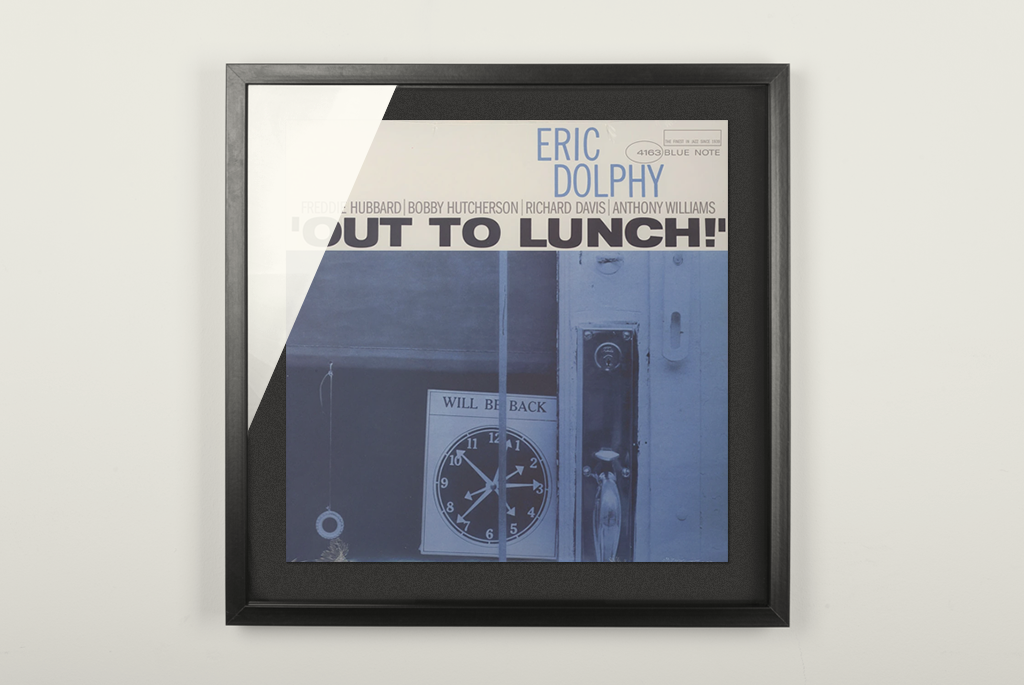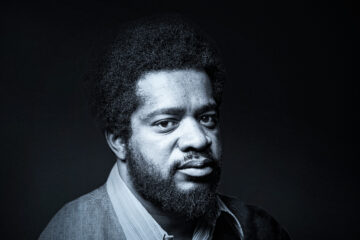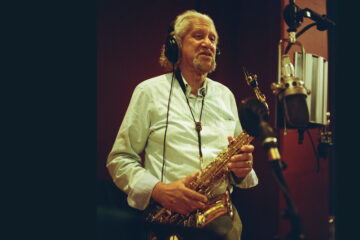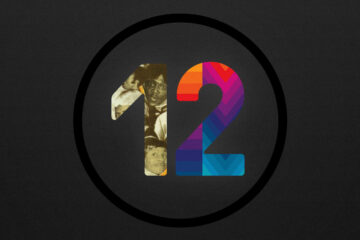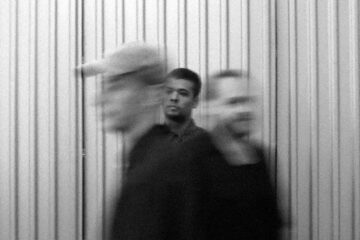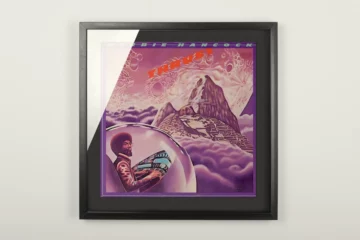Eric Dolphy didn’t live to see the greatest triumph of his short career. »Out To Lunch!« was released in August 1964. It was his first and only album as a bandleader on the Blue Note label, and the multi-instrumentalist had already been dead for two months. In June 1964, Dolphy was in Berlin to give a concert with the Karl Berger Trio to reopen the Tangente jazz club. He collapsed during the performance, was rushed to hospital and died unexpectedly two days later, at the age of 36, from undiagnosed diabetes.
Within a few years, Eric Dolphy had made a name for himself as a sideman for the likes of Charles Mingus, Ron Carter, Max Roach and Abbey Lincoln, but above all he played extensively with his friend John Coltrane. Playing alto saxophone, bass clarinet and flute, Dolphy lent a mystical, exotic character to the albums on which he appeared as a sideman, developing a musical freedom defined not by stubbornly ignoring all boundaries but by consciously transgressing them. From 1960, Dolphy also released a number of albums as a bandleader—»Out There« (1961), »Conversations« (1963)—but none of them achieved the quality and intensity of his masterpiece »Out To Lunch!«.
All musicians are bandleaders
On 25 February 1964 at Van Gelder Studios in New Jersey, this multi-instrumentalist found himself surrounded by a top-notch band: Freddie Hubbard on trumpet, Bobby Hutcherson on vibraphone, Richard Davis on bass and the then 18-year-old Tony Williams, who had a fantastic career in front of him, on drums. The fact that Dolphy dispensed with a pianist in his rhythm section, relying instead on Bobby Hutcherson on vibraphone, is just one of the unique features of this album. Hutcherson acts as an interface between the players, his percussive playing acting as a hub for communication between the musicians. With his vibraphone, he adds an accent here, »answers« a melody there, commenting on the contributions made by his fellow musicians. And that’s exactly the way Dolphy wanted it, declaring all the musicians on the album to be bandleaders.
The five compositions are melodic and dissonant at the same time. They don’t completely swear off tradition, but they don’t completely trust contemporary jazz either.
Eric Dolphy seeks musical freedom less in atonality than in unusual, complex rhythms and time signatures as well as in the interplay between the musicians. The five compositions are melodic and dissonant at the same time. They don’t completely swear off tradition, but they don’t completely trust contemporary jazz either. That’s the special thing about this album: on »Out To Lunch!« Eric Dolphy navigates the no-man’s-land between post-bop and free jazz and finds a new path for avant-garde jazz.
From saxophone to flute to clarinet
Truly magical moments are created when he switches from alto sax to flute and bass clarinet. »Something Sweet, Something Tender« is a subtle duet between bass clarinet and bass, while »Gazzelloni« has him playing the craziest caprices on the flute. The piece is named after the Italian classical flautist Severino Gazzelloni, Dolphy’s former flute teacher. And the title track comes closest to what was then called free jazz. The twelve-minute »Out To Lunch!« leaves plenty of room for solos and subtle interactions that showcase the chemistry between the musicians. Dolphy’s alto sax playing sounds like it comes from a military band.
Although there were much more overt musical experiments around at the time of the album’s release, like Ornette Coleman’s »Free Jazz«, on which Dolphy and Hubbard themselves both featured, »Out To Lunch!« was rejected by jazz purists. Dolphy appears to anticipate the reaction in the album’s liner notes. »I’m going to live in Europe for a while. Why? Because I get more work there with my own music, and because people put you down if you try to do something different in this country«, he writes. Sixty years on, we are wiser and appreciate »Out To Lunch!« for what it is: a masterpiece of avant-garde jazz.

